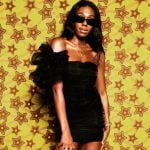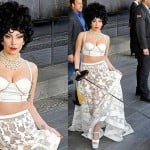
These brave new design environments put fresh demands on type designers as well as graphic designers, and raise a thorny yet fascinating tangle of questions about legibility, letterform design, and typeface selection.
For a user, the spatial aspect and immediacy of being surrounded by type within a VR environment requires a different way of thinking about both typography and the information it conveys.
VR, AR and MR now mean designers must consider such variables as motion, volume, UI/UX, and sound to get the most benefit out of the full, immersive experience they provide. Because VR is a closed digital experience replacing the sensations of the haptic world, and AR or MR superimposes digital information onto the real environment, the typographic considerations of each have some key differences.
VR can be entirely its own fantasy land, while MR means the type has to play nice with all the available sensory input.
Jay Iorio, director of innovation at the Institute of Electrical and Electronics Engineers (IEEE), says: “In AR, imagine you have email coming in, somebody at a remote location who wants to conference with you as a hologram on the street, plus a constantly updating news feed, all of it integrated in real-time through artificial intelligence.
“So what is type in that scenario? Is it a crawl, a bunch of floating texts? Pop-ups? It comes down to an issue of interface design for a relentless stream of content. What’s the mechanism to manage and interact with all that? None of this has been decided yet.”
Joshua To, design director at Google, says: “Many of the basic rules around typographic contrast and readability for print or 2D screens change in VR. When type becomes even a little bit more volumetric, the way people perceive it and interact with it changes. The type needs to be rooted in something real, otherwise it gets a little uncanny for the user.”
Sigmund Freud defined the uncanny as “that species of the frightening that goes back to what was once well known and had long been familiar,” which explains why it’s potentially disturbing to experience the passive and flat alphabets, words, sentences, and texts we know and love joining us in the 3D world and taking on a suddenly active, volumetric role.
The biomechanical aspects of how we read in a VR environment are of key importance to designers as well.
Dan Rhatigan, senior type manager at Adobe, says: “Our binocular vision means that our eyes are meant to work in tandem, but in VR each eye gets its own direct input.”
Many users of VR find themselves nauseous as their brains struggle to adjust and process the flood of information coming in via a previously unknown delivery system.
“VR introduces many factors and variables that can interfere with the reading process,” says Jaime Van Wart, a recent graduate of the MFA Program in graphic design at the California Institute of the Arts.
“Paragraphs of text might function adequately as texture in a VR environment, but to really render the text readable, the amount of movement needs to be controlled to a point where the VR itself might not add anything to the experience.”
In VR, type becomes physical, elastic, monumental, dimensional, confrontational – and distorted. Sharleen Chen, another alumnus of the CalArts MFA design programme, says: “Designing for VR is designing for a 360° globe with you at the centre. How do you warp type around a concave surface without distorting it? Or do you decide to embrace the distortion and just say: “This is how it works here, that’s all.”
As the technology for content delivery improves, type will evolve too. Web type – initially primitive and not graphically pleasing, by and large – became sophisticated and far more artfully nuanced as type designers addressed the requirements of letterform creation for screens, and as screens gained in sharpness and pixel resolution.
A book is a framing device for a narrative; a painting in a museum has a frame around it; a piece of music has its own structure and framework. VR is the first design environment to dispense with the frame, because the user is an integral part of the experience. Across a range of design contexts, text is still how our civilization gets passed down – images are powerful but imprecise, too open to individual interpretation and manipulation.
Type cleanly conveys the best of our ideas, literature, science, art, poetry. What if VR becomes a way to reintroduce the culture to text and the depth of thought that goes with it? Apart from the satisfaction of overcoming the formidable typographic challenges presented by this recent format, the social goal is one well worth pursuing. Text is what keeps us together.
Source:-thedrum











